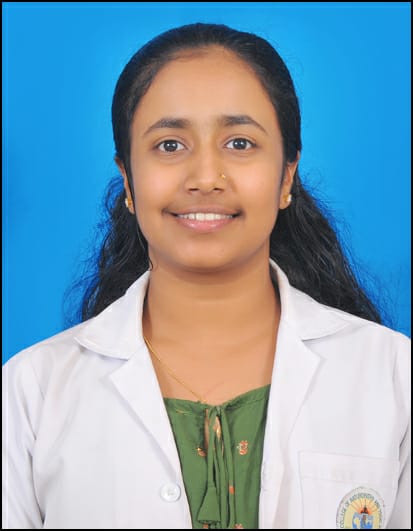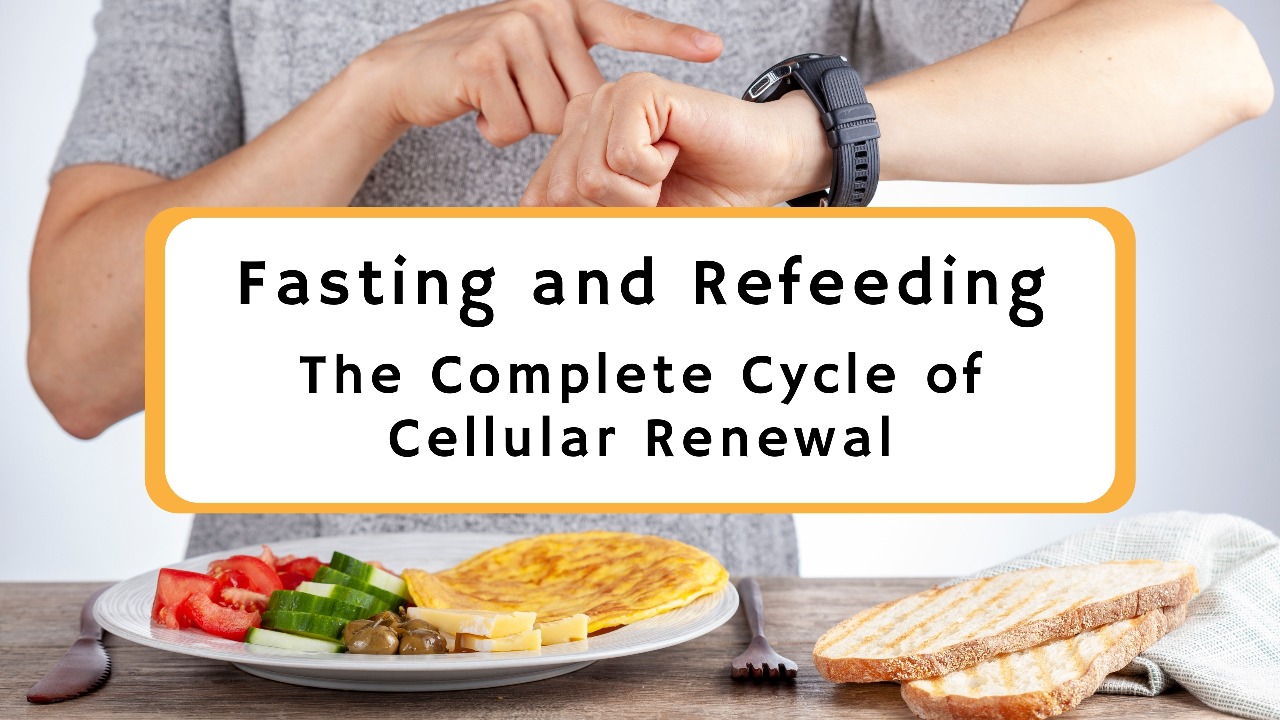Across time and cultures, fasting has been practiced as a path to discipline, clarity, and healing. But new science shows it’s not just the fast, it’s what happens after, that holds the real power.
A compelling review in Nature Aging by Dr.Valter Longo and colleagues reveals how fasting and refeeding together form a complete biological rhythm that can spark cellular renewal, enhance metabolic health, and support healthy ageing. This isn’t just about eating less, it’s about strategic nourishment, recovery, and tapping into the body’s natural cycles of repair.
🔄 The Cycle: Not Just Restriction, But Renewal
Rather than simply depriving the body of food, fasting induces a protective, energy-conserving mode that prepares the body to heal. But that’s only half the story.
🔹During fasting: The body shifts into a low-energy state, reduces growth signals like IGF-1 and mTOR, and activates protective pathways such as AMPK, promoting stress resistance, reduced inflammation, and autophagy (cellular clean-up).
🔹During refeeding: The system switches gears. Stem cells are activated, tissues regenerate, and previously suppressed repair processes kick in, particularly in immune, gut, and pancreatic cells.
Together, these two phases form a biological rhythm of reset and rebuild, mirroring the natural feast-famine cycles that shaped human evolution.
⏱️ Types of Fasting and Their Benefits
The review discusses several structured fasting approaches currently under investigation for health optimization and therapeutic use:
- Intermittent Fasting (IF)
Includes patterns of fasting and eating on a daily or alternate-day schedule.
- Time-Restricted Feeding (TRF): Eating within a set window (e.g., 8 -10 hours) each day while fasting the remaining hours.
✅Supports circadian alignment, improves glucose metabolism, and may reduce oxidative stress. - Alternate-Day Fasting (ADF): Alternating fasting days (or very low-calorie intake) with regular eating days.
✅ Associated with improved lipid profiles, weight loss, and inflammation reduction.
- Periodic Fasting (PF)
Involves longer fasts ranging from 2 to 7 days, typically practiced less frequently.
- Often implemented as Fasting-Mimicking Diets (FMD) – plant-based, low-protein, low-calorie plans designed to simulate fasting while providing some nourishment.
✅Activates cellular repair mechanisms, reduces IGF-1 and CRP, and promotes fat loss while preserving lean mass.
🍲 Refeeding: Where Renewal Truly Begins
What sets this review apart is its emphasis on refeeding as a regenerative trigger, not just a recovery phase.
- Refeeding initiates stem cell activation, particularly in the immune system, pancreas, and gastrointestinal tract.
- It replenishes essential nutrients, reactivates growth factors in a balanced way, and allows the body to rebuild after the protective fasting phase.
- Importantly, the benefits of fasting depend on a well-executed refeed phase – which includes nutrient-rich, plant-based meals, not overindulgence.
🧠Key takeaway: Refeeding isn’t just breaking a fast – it’s completing a cycle. Without it, fasting loses its full regenerative potential.
🧪 Evidence from Lab to Life
🔬 Animal Studies:
- Mice on fasting-refeeding cycles lived longer, regenerated β-cells (in diabetes models), and improved neurocognitive function.
- Autoimmune conditions like MS showed reduced inflammation and better nerve repair.
- Fasting followed by refeeding led to rebuilding of damaged systems, not just maintenance.
🧍♂️ Human Studies:
- Intermittent fasting (IF) and periodic fasting (PF) improved insulin sensitivity, lowered blood pressure, and reduced inflammatory markers.
- FMD cycles led to sustained reductions in central fat, IGF-1, and CRP – all linked to age-related decline.
💡 Personalization Matters: One Cycle Doesn’t Fit All
While promising, fasting and refeeding aren’t for everyone. The review emphasizes caution for:
- Frail or underweight individuals
- People with metabolic disorders or nutrient deficiencies, chronic illnesses
- Those with histories of disordered eating
The key is personalization – fasting should be guided by a person’s biology, goals, and health status, ideally under professional supervision.
Fasting is not a universal fix – it’s a targeted rhythm that must be adapted to individual needs.
⚕️ An Emerging Role in Integrative Therapeutics
Beyond lifestyle, fasting-refeeding cycles are being explored as adjuncts in integrative approaches to chronic conditions:
- 🧠Neurodegenerative diseases: Potential to reduce toxic build-up and support brain resilience
- ⚖️Cancer care: May protect healthy cells and sensitize tumors during treatment
- 🔄Autoimmune disorders: Could help reset immune responses and lower systemic inflammation
These applications reflect growing interest in complementary, biologically timed therapies – especially within integrative oncology and chronic disease management.
🌱 Getting Started: Simple Suggestions
If you’re curious about exploring fasting and refeeding:
- ✅ Begin with gentle cycles like 12:12 time-restricted eating (12 hours fasting, 12 hours eating)
- 🥗 Always follow fasts with nutrient-dense, plant-based meals to support tissue repair
- 📆 Consider monthly fasting-mimicking diets (FMD) under guidance
- ⚠️ Consult a healthcare provider before beginning, especially if you have medical conditions
Remember: the goal is not to starve – but to give the body a structured rhythm of pause and nourishment.
✨ Final Thought: A Cycle Rooted in Nature
Fasting alone is not the cure. And eating alone is not the harm. It’s the cycle, the timing, the rhythm, and the recovery, that makes all the difference.
“Fasting primes the body. Refeeding restores the balance.”
Together, they form a natural regenerative cycle, now backed by emerging science.
Whether for healthy ageing, resilience, or recovery, this simple rhythm may offer a powerful path to healing from within.
This article is based on insights from:Longo, V. D., Di Tano, M., Mattson, M. P., &Guidi, N. (2021). Intermittent and periodic fasting, longevity and disease. Nature aging, 1(1), 47–59.
Cite the article:
https://pmc.ncbi.nlm.nih.gov/articles/PMC8932957/

Written by Dr Yadhushree P V

